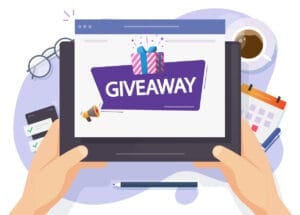Conteúdo
O conteúdo longo é aquele que geralmente tem cerca de 2.000 palavras ou mais. O conteúdo longo tem sido um dos muitos elementos essenciais de SEO. Ele está se tornando a forma mais preferida de conteúdo, em oposição a algo curto. No entanto, não se pode dizer que uma forma seja melhor que a outra: tudo depende do tópico, da substância, do público-alvo e do nível de profundidade que você precisa atingir.
O conteúdo longo não é apenas escrever artigos longos e publicá-los em seu blog para que os leitores vejam: ele precisa ser bem pesquisado, bem escrito e conter elementos de SEO suficientes para que se destaque nas classificações dos mecanismos de pesquisa.
Sem SEO, as chances de sua postagem de blog se destacar em um mar de postagens longas são muito pequenas. Os mecanismos de pesquisa não o classificarão tão bem quanto deveriam (se é que notarão sua postagem), e o tráfego direcionado à sua postagem no blog será muito baixo.
Portanto, ao escrever um conteúdo longo para o seu blog, há alguns elementos essenciais de SEO que você precisa conhecer e incorporar ao seu texto.
Fundamentos de SEO para conteúdo de formato longo
1) Faça uma pesquisa de palavras-chave: Use palavras-chave de cauda longa
Você já conhece seu nicho e pesquisou seu tópico: agora você deve pesquisar algumas palavras-chave para usar em seu artigo. Essas palavras-chave devem estar relacionadas ao tópico sobre o qual você está escrevendo, e procurar palavras-chave com baixa concorrência é uma boa ideia.
Se a pesquisa de palavras-chave para "chá verde para perda de peso" for 300 e a pesquisa para "chá verde para perda de peso em mulheres jovens" for 201, você deverá escolher essa palavra-chave. Essas frases também são exemplos de palavras-chave de cauda longa. Como o nome indica, as palavras-chave de cauda longa são palavras-chave longas e muito específicas sobre um assunto. As palavras-chave de cauda longa são muito mais fáceis de serem classificadas nos mecanismos de pesquisa e, portanto, geram mais tráfego para o seu blog ou site.
2) Crie subtítulos úteis
Após o cabeçalho principal ou o título do artigo, há os subtítulos. Eles são usados para dividir o conteúdo longo em parágrafos intitulados que são mais fáceis de consumir. Usar palavras-chave em seus subtítulos é uma boa ideia, mas tome cuidado para não exagerar. Os mecanismos de pesquisa podem considerar isso como keyword stuffing, e seu conteúdo não será classificado.
3) Obtenha backlinks de influenciadores
Os influenciadores são como as celebridades do nicho de seu blog. Backlinks são hiperlinks para sua página da Web a partir de um site diferente. Ao obter backlinks de influenciadores (na forma de compartilhamentos ou repostagens em mídias sociais, ou links em uma publicação de blog), você pode direcionar muito tráfego para o seu blog. No entanto, tente não dizer diretamente a eles que você quer um backlink deles. Tente ser diplomático.
4) Faça uso de links internos
Os links internos são aqueles que ligam seu próprio site a outras partes do site. Não se confunda com isso: os links internos são importantes para fins de SEO. Com eles, você pode direcionar os visitantes para outros locais do seu site que você gostaria que eles visitassem. Também não exagere com os links internos.
5) Faça uso de links de saída
Os links de saída são aqueles que direcionam para outros sites ou blogs a partir do seu site ou blog. Você pode usar links de saída quando quiser que seus leitores vejam algum conteúdo que você está recomendando a eles ou quando estiver mostrando a eles algo que você escreveu em outro site. Os links de saída melhoram muito suas classificações de SEO, mas a nota de advertência permanece: não exagere.
6) Otimize seus URLs
URL significa Uniform Resource Locator (localizador uniforme de recursos) e é o endereço de uma página da Web, de um podcast ou de algum outro recurso on-line da Internet. É o que os usuários da Internet usam para encontrá-lo e o que os mecanismos de busca usam para indexá-lo. Seus URLs devem ser curtos e claros e também conter sua palavra-chave principal ou uma palavra-chave de cauda longa.
7) Torne sua meta descrição amigável para SEO
Uma metadescrição é uma parte curta do conteúdo, com cerca de 135 a 160 caracteres, que informa aos leitores sobre o assunto do seu artigo. Sua meta descrição deve incluir a palavra-chave de foco e deve ser descritiva e direta. Ela também deve ser honesta, informando aos leitores exatamente o que eles encontrarão no artigo e incentivando-os a conferir o artigo.
8) Torne sua postagem compatível com dispositivos móveis
A forma como seu artigo aparece em dispositivos móveis é tão importante quanto tornar sua postagem responsiva. Com conteúdo de formato longoSe o seu conteúdo for mais fácil de ler, use parágrafos mais curtos e mídia, como imagens, para quebrar o texto, e certifique-se de usar subtítulos. Isso torna seu conteúdo melhor para visualização em dispositivos móveis.
9) Use palavras-chave LSI
LSI significa indexação semântica latente e refere-se a palavras-chave que são semelhantes às palavras-chave de foco. Se a sua palavra-chave de foco for "procura de emprego", a palavra-chave LSI poderá ser "procura de emprego" ou "procura de emprego". As palavras-chave LSI são, na maioria das vezes, palavras-chave de cauda longa.
10) Verifique a frequência de suas palavras-chave
A frequência da palavra-chave refere-se à frequência com que você usa a palavra-chave em seu conteúdo. Obviamente, você precisa usar mais sua palavra-chave em conteúdo longo, mas a advertência de sempre permanece: não exagere. Você pode usar a palavra-chave principal de 4 a 5 vezes em toda a publicação, mas as palavras-chave de cauda longa e LSI podem ser usadas com mais frequência. Se parecer estranho, deixe para lá. Leia o artigo em voz alta para testar a naturalidade com que o texto flui com as palavras-chave e ajuste-as conforme necessário.
O conteúdo de formato longo funciona melhor quando o SEO é incorporado a ele. Os 10 elementos essenciais de SEO apresentados acima não são necessariamente uma lista de todos os elementos de SEO necessários para o seu conteúdo longo, mas são suficientes para que você comece a trilhar o caminho certo. Use-os ao escrever e editar as postagens do seu blog e veja seu conteúdo se transformar em algo de qualidade e profundidade que impulsionará suas classificações de SEO e aumentará o tráfego do seu blog.


